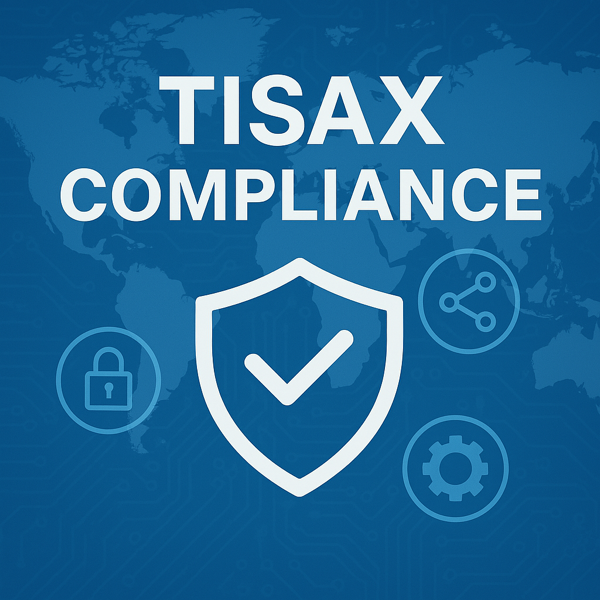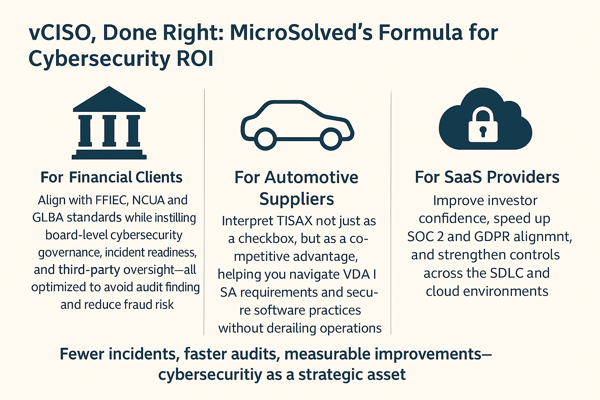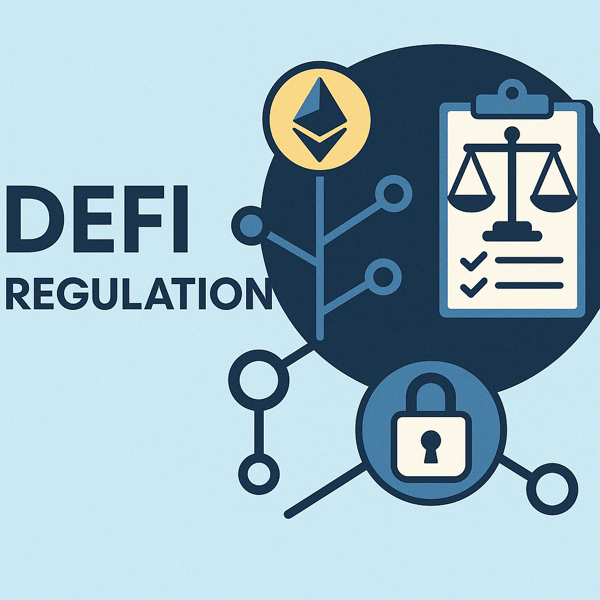The ability to effectively visualize and manage data flows is crucial for organizational success. As businesses generate vast amounts of data, understanding how this information moves between sources and targets becomes essential for making informed decisions. Without a clear data flow mapping strategy, companies risk mismanaging their data assets.

Data flow mapping involves defining data sources and targets, identifying data requirements, and employing various mapping techniques to ensure seamless data movement. From manual efforts to sophisticated automated solutions, organizations must choose the best approach that caters to their specific needs, all while addressing challenges such as data complexity and integration with legacy systems.
This article will guide you through the essentials of enterprise data flow mapping, highlighting its importance, techniques, tools, and best practices. By embracing effective data flow mapping, you can unlock the benefits of improved data quality, enhanced decision-making, and streamlined business operations.
Understand the Importance of Data Flow Mapping
Data flow mapping offers a high-level overview of a system’s architecture, which allows organizations to gain insights into the flow of data and its processes. In industries like healthcare, effective data flow mapping is crucial for enhancing data management and ensuring compliance with patient protection laws. It clearly delineates the origin of patient data and its utilization, thus supporting regulatory compliance with standards such as GDPR and CCPA.
By visualizing and tracking data flows in real time, organizations can promptly identify and resolve potential vulnerabilities and data leaks. This proactive approach not only secures sensitive information but also reinforces regulatory compliance by ensuring data is accounted for and properly protected.
Organizations can make informed decisions regarding data collection, storage, security measures, and retention practices by leveraging accurate data flow mapping. This capability is essential for optimizing business processes and aligning them with strategic goals.
Key Benefits of Data Flow Mapping:
- Enhances data management
- Supports regulatory compliance
- Identifies vulnerabilities in real time
- Informs strategic decisions
Improving mapping accuracy is vital for seamless data integration, leading to more effective business intelligence and real-time analytics. Thus, data flow mapping is an indispensable tool for any enterprise aiming to harness the full potential of its data assets.
Define Data Sources and Targets
Defining data sources and targets is a crucial step in the data mapping process. Data sources, such as customer forms or automated systems, introduce data into a system. On the other hand, data destinations, or data sinks, include databases where data is stored for further processing. It’s important to recognize that an external entity might serve dual roles—as both a data source and a destination—highlighting the dynamic nature of data mapping processes.
Complexity in data mapping increases with diverse data types, necessitating precise identification of suitable sources and destinations. This ensures interoperability and consistency across the system. Effective data mapping hinges on clear documentation of these data sources and targets, which maintains data lineage and ensures accurate transformations throughout the data lifecycle.
For accuracy, consider the following:
- Identify all data sources.
- Determine the target systems or schemas.
- Document data flow meticulously.
|
Data Component
|
Example
|
|
Data Source
|
Customer Forms
|
|
Data Destination
|
Databases
|
By accurately defining data sources and targets, enterprises can achieve seamless data integration and comply with regulatory standards, facilitating effective data mapping and informed decision-making.
Identify Data Requirements
Identifying data requirements is a critical first step in the data mapping process. This involves clearly defining data formats, transformation rules, and validation criteria to ensure seamless integration with your chosen data mapping tool. Start by identifying both data sources and target systems, as this establishes how data corresponds across disparate sources.
An essential part of this process includes gathering requirements through data profiling and analysis to understand the characteristics and quality of the data. This knowledge supports accurate data mapping and helps avoid errors during complex transformations.
Creating a comprehensive data mapping document is vital. This document outlines the transformations and connections between source and target data, serving as an invaluable reference throughout your mapping project. Remember, maintaining this document is crucial for improving long-term mapping accuracy and facilitating effective management of any future changes or migrations.
Key Steps in Identifying Data Requirements:
- Specify data formats.
- Define transformation rules.
- Set validation criteria.
- Identify data sources and targets.
- Conduct data profiling and analysis.
- Create and maintain a comprehensive data mapping document.
By following these steps, enterprises can ensure effective data flow mapping and better support their business processes.
Explore Data Mapping Techniques
Data mapping techniques are a cornerstone of successful data integration, migration, and synchronization efforts across enterprises. These techniques involve various methods to define relationships and transformations between data elements in source and target systems. By understanding these techniques, businesses can better align their data architecture with organizational goals and improve data flow mapping accuracy.
Recognizing the importance of an accurate mapping process is crucial, particularly in the context of managing complex mappings and ensuring data integrity. Modern mapping solutions now leverage advanced capabilities such as automation and artificial intelligence, allowing for efficient data governance and real-time analytics. Let’s explore three primary approaches to data mapping: manual, semi-automated, and automated techniques.
Manual Data Mapping
Manual data mapping is a hands-on approach often used by smaller organizations with limited data scope. This method involves connecting data sources and documenting the entire process using code. While manual data mapping offers full customization to meet specific needs, it is highly resource-intensive.
Typically, analysts utilize coding languages such as SQL, C++, or Java to create these data maps, offering complete control over the mapping process. However, it is time-consuming and susceptible to human error. This method often requires the support of Extract, Transform, and Load (ETL) functions to move data efficiently between databases. Given the extensive effort required, manual data mapping may be impractical for larger enterprises handling vast data volumes.
Semi-Automated Data Mapping
Semi-automated data mapping strikes a balance between automation and manual oversight, making it an effective solution for organizations with budget constraints. This approach combines automated processes with manual reviews to ensure data accuracy and adaptability.
While it necessitates a certain level of coding expertise, semi-automated data mapping allows users to leverage visual interfaces for creating schema maps. Features like drag-and-drop functionality facilitate matching fields between databases, offering flexibility without compromising on control. This method is well-suited for projects with smaller data volumes, where routine migrations, integrations, and transformations are necessary.
Automated Data Mapping
Automated data mapping represents the pinnacle of modern data mapping solutions, significantly enhancing the speed and efficiency of the mapping process. By eliminating manual intervention, these tools streamline workflows and reduce potential errors.
Incorporating AI technologies, automated data mapping tools offer customizable transformations, such as merging columns and computing values. This not only increases mapping accuracy but also enhances scalability, resulting in substantial time and cost savings. Additionally, real-time data maps provide valuable visibility into complex data flows, supporting informed, data-driven business decisions.
Automated mapping tools are perfectly tailored for larger enterprises seeking seamless data integration and regulatory compliance. They enable businesses to maintain high data quality and make agile corrections to any discrepancies during data movement.
Key Benefits of Effective Data Flow Mapping
In today’s digital age, enterprises generate and handle vast amounts of data from disparate sources, making the task of managing and understanding data flows more crucial than ever. Effective data flow mapping provides a unified visual representation of how data moves within an organization, offering a range of benefits that enhance operational efficiency, data quality, and decision-making processes. By utilizing advanced mapping solutions and techniques, businesses can ensure seamless data integration, accurate mapping accuracy, and compliance with regulatory standards.
Improved Data Quality
Accurate data mapping is the cornerstone of maintaining high data quality within any enterprise. This meticulous mapping process aligns disparate data sources, ensuring that the integrated data is accurate, complete, and consistent. Avoiding data duplication and rectifying errors during data movement or transformation are key to ensuring reliable analytics and reporting. Here’s how accurate data mapping fosters improved data quality:
- Error Detection and Correction: Identify and correct discrepancies to maintain consistency.
- Alignment of Data Sources: Bridge disparate data sources ensuring uniformity.
- Avoidance of Data Redundancy: Eliminate duplicates to enhance data integrity.
- Consistent Data Quality: Maintain high standards of data quality throughout transitions, such as migrations and integrations.
By using metadata-driven mapping and semi-automated data mapping tools, organizations can maintain data integrity and minimize the risk of data loss or corruption during integration or migration projects.
Enhanced Decision-Making
The capability to make informed decisions is significantly bolstered by accurate data mapping. A well-constructed data map offers a clear context diagram of data origins and flows, crucial for understanding how data is utilized within an enterprise. Enhanced decision-making stems from:
- Reliable Information: Reduces the likelihood of errors, supporting sound business decisions.
- Strategic Insights: Allows decision-makers to focus on insights rather than rectifying data discrepancies.
- Risk Management: Identifies unusual activities, mitigating risks of financial fraud.
By streamlining internal processes through effective data flow mapping, organizations ensure smoother operations and better strategic oversight, ultimately fostering an improved business logic.
Streamlined Business Operations
Effectively mapping data flows is pivotal for ensuring that data from various sources is accurately aligned and integrated to support specific business objectives. Key aspects of streamlined operations achieved through data mapping include:
- Data Integrity and Accessibility: Ensures information is consistently available across different organizational systems.
- Operational Efficiency: Reduces redundancy and errors, supporting informed, data-driven decisions.
- Consistent Information View: Critical for migration, warehousing, and compliance.
Projects involving complex transformations and target schemas benefit significantly from precise data mapping, which maintains a trusted data foundation and ensures a consistent view of information. Moreover, accurate data mapping contributes to business intelligence by revealing redundant data sources and enhancing the reliability of analytics results, thereby improving the overall performance of business processes.
In conclusion, data flow mapping is an essential tool for enterprises to navigate complex mappings and achieve seamless data integration, real-time analytics, and regulatory compliance. By adhering to best practices and employing effective mapping tools and techniques, businesses can harness the full potential of their data for better decision-making and streamlined operations.
Common Challenges in Data Flow Mapping
Data flow mapping for large enterprises can be fraught with challenges due to the intricate network of systems and data streams involved. One primary issue is the complexity introduced by numerous systems, leading to issues such as black holes, miracles, and grey holes, which can significantly impact the accuracy of data flows. As companies integrate agent-based data mapping tools with various system components, they may face obstacles in generating precise and comprehensive data flow maps. Furthermore, the availability of versatile data flow mapping tools is limited, hindering the visualization of data flow across all system components while providing essential context.
Addressing Data Complexity
Dealing with data complexity is crucial as development projects scale in size, often involving multiple teams and third-party data sources. This necessitates effective management of diverse data events to ensure successful outcomes. Organizations must also navigate complex business logic and transformation requirements, particularly in environments housing large datasets. Compliance with data protection laws such as GDPR presents additional complexity, especially with respect to cross-border data transfers and third-party services. The proliferation of data silos can impede comprehensive data integration, preventing a unified view of data assets. Lastly, a specialized skills gap in data management further challenges organizations in effectively managing large-scale data mapping initiatives.
Integration with Legacy Systems
Organizations frequently encounter difficulties when integrating and mapping data from legacy systems, which often employ outdated technologies and proprietary formats. As data volumes increase, bridging the gap between legacy systems and modern data platforms becomes more daunting. Legacy systems typically lack the necessary documentation for contemporary data mapping tools, complicating data flow mapping efforts. To overcome these hurdles, organizations can conduct thorough audits to understand existing data flows and gradually modernize their IT infrastructures, ensuring compatibility and accurate data mapping.
Ensuring Data Security
Data flow mapping serves as a powerful tool for enhancing data security by offering granular visibility into data movements across networks, applications, and endpoints. This visibility enables organizations to identify vulnerabilities, such as weak encryption or inadequate access controls that could be exploited. By adopting a structured approach to data flow mapping, organizations can strengthen their data security posture, ensuring comprehensive monitoring and management of data handling. Effective data mapping tools often incorporate features for data governance, facilitating the monitoring of data quality and maintenance of data integrity. Automated data mapping solutions can efficiently handle high volumes of data, enabling businesses to comply with stringent data protection and privacy regulations.
Tools for Data Flow Mapping
Data flow mapping is a critical process for enterprises aiming for seamless data integration and real-time analytics. Tools like Microsoft Visio, Lucidchart, and Google Drawings are widely favored for their user-friendly interfaces that enable the creation of visual representations and flow diagrams with ease. These mapping tools are invaluable for depicting complex mappings and transformations essential for aligning business processes with business intelligence objectives.
Moreover, data flow mapping supports metadata-driven mapping, which is vital for maintaining Regulatory Compliance and managing disparate sources. By defining relationships between source and target schemas, these tools enhance mapping accuracy and effective data mapping, facilitating informed decision-making.
Despite being labor-intensive, manual data flow mapping offers a deeper understanding of business logic and data processes, serving as a complement to automated solutions. Integrating these efforts can significantly reduce errors and resource costs while supporting scalable integration of new data sources.
Key Benefits of Data Flow Mapping Tools:
- Visual Representation: Easy-to-understand diagrams.
- Mapping Accuracy: Enhances seamless integration.
- Compliance Support: Aids in data governance adherence.
Using a combination of these mapping solutions ensures more accurate and informed analysis, driving effective business outcomes.
Best Practices for Successful Data Flow Mapping
Successful data flow mapping is essential for enterprises aiming to improve their business intelligence and ensure regulatory compliance. To achieve this, regular reviews of data flow maps are crucial. These reviews help in keeping the visual representation of business processes up to date, ensuring they reflect current data flows accurately.
Implementing continuous monitoring is another key practice. It allows enterprises to uphold data quality and consistency over time, supporting informed decision-making through real-time analytics. Additionally, updating documentation to track changes in data sources, targets, or map rules is vital for maintaining data integrity and traceability.
Using advanced mapping tools can automate complex mappings, effectively catering to various data integration, migration, and transformation needs. These semi-automated data mapping solutions reduce errors and improve mapping accuracy.
Collaboration among data engineers, analysts, business stakeholders, and data governance teams ensures seamless data integration and management across disparate sources. This collaborative approach guarantees that the mapping process aligns with business logic and meets the organization’s wide range of needs.
By adhering to these best practices, enterprises can develop and maintain accurate data mapping processes that not only streamline operations but also adapt to evolving data requirements.
Advanced Solutions for Evolving Data Needs
In today’s rapidly evolving business environment, advanced data mapping solutions are essential for handling complex and disparate data sources. AI-driven data mapping utilizes artificial intelligence and machine learning to enhance predictive field matching, significantly reducing human intervention and accelerating the overall mapping process. Real-time mapping capabilities allow for continuous data flows, providing instantaneous insights crucial for informed decision-making in fast-paced settings.
Adaptive mapping techniques ensure seamless data integration by automatically adjusting to schema changes, thus preserving data integrity with minimal manual input. Meanwhile, metadata-driven mapping leverages existing metadata to enhance mapping accuracy, aligning with broader data governance initiatives.
For non-technical stakeholders, the emergence of low-code/no-code mapping tools offers an intuitive interface, dramatically lowering the reliance on IT departments and facilitating more efficient business processes. These cutting-edge advancements also support complex transformations and the development of accurate data mapping, vital for regulatory compliance and real-time analytics.
Key Features:
- AI-driven Mapping
- Real-time Capabilities
- Adaptive Techniques
- Metadata-driven Accuracy
- Low-code/No-code Tools
By employing these advanced solutions, enterprises can effectively address their evolving data needs, ensuring accurate and efficient data mapping across a wide range of scenarios.
Navigating Data Privacy Regulations
Navigating data privacy regulations is crucial for organizations, especially under frameworks like GDPR, CCPA, and CPRA. A foundational element in this journey is effective data mapping. This process aids in maintaining detailed Records of Processing Activities (RoPAs) as required by Article 30 of GDPR.
Here is how data mapping assists in compliance:
- Comprehensive Documentation: Accurate data mapping allows for thorough documentation of data processing activities, essential under GDPR and similar laws.
- Sensitive Data Security: Ensures the security of sensitive data, crucial for adhering to PCI DSS requirements.
- Regulatory Compliance: Facilitates compliance with laws by providing a clear visual representation of data flow, aiding in informed decision-making.
|
Key Aspects
|
Benefits
|
|
Detailed RoPAs
|
Accurate processing activity records
|
|
Data Security
|
Compliance with security measures
|
|
Visual Data Representation
|
Better understanding of data flows
|
By leveraging accurate and effective data mapping processes, organizations can support seamless data integration and enhance their real-time analytics capabilities, ensuring they meet regulatory compliance effortlessly.
More Information and Help from MicroSolved
Data mapping is vital for ensuring data accuracy, consistency, and quality when integrating data within an organization. MicroSolved offers assistance with this process, helping establish strong data governance practices essential for compliance purposes. By tracing the origin, transformation, and usage of data, organizations can meet industry-specific regulatory requirements, such as those in healthcare and financial services.
A key benefit of comprehensive data flow mapping is enhanced data security. Especially in sectors like healthcare, safeguarding sensitive information is crucial to meet regulatory compliance and avoid data breaches. Financial institutions also rely on data flow mapping to manage vast volumes of financial data and reduce the risk of misuse and fraud.
MicroSolved provides support and training to facilitate effective data mapping. With the continuous evolution of data flow mapping driven by technological advancements, enterprises can optimize their data management processes.
For more information or assistance, consider reaching out to MicroSolved, your partner in navigating complex data integration and ensuring seamless data management.
* AI tools were used as a research assistant for this content.



 Unlike one-size-fits-all models, our vCISO engagements begin with immersive understanding: of your business model, sector-specific compliance demands (think NCUA/FFIEC for credit unions, TISAX for auto suppliers, GDPR/SOC2 for SaaS), and your organizational risk appetite. From there, we build a living security program that’s actionable, measurable, and defensible under scrutiny.
Unlike one-size-fits-all models, our vCISO engagements begin with immersive understanding: of your business model, sector-specific compliance demands (think NCUA/FFIEC for credit unions, TISAX for auto suppliers, GDPR/SOC2 for SaaS), and your organizational risk appetite. From there, we build a living security program that’s actionable, measurable, and defensible under scrutiny.




